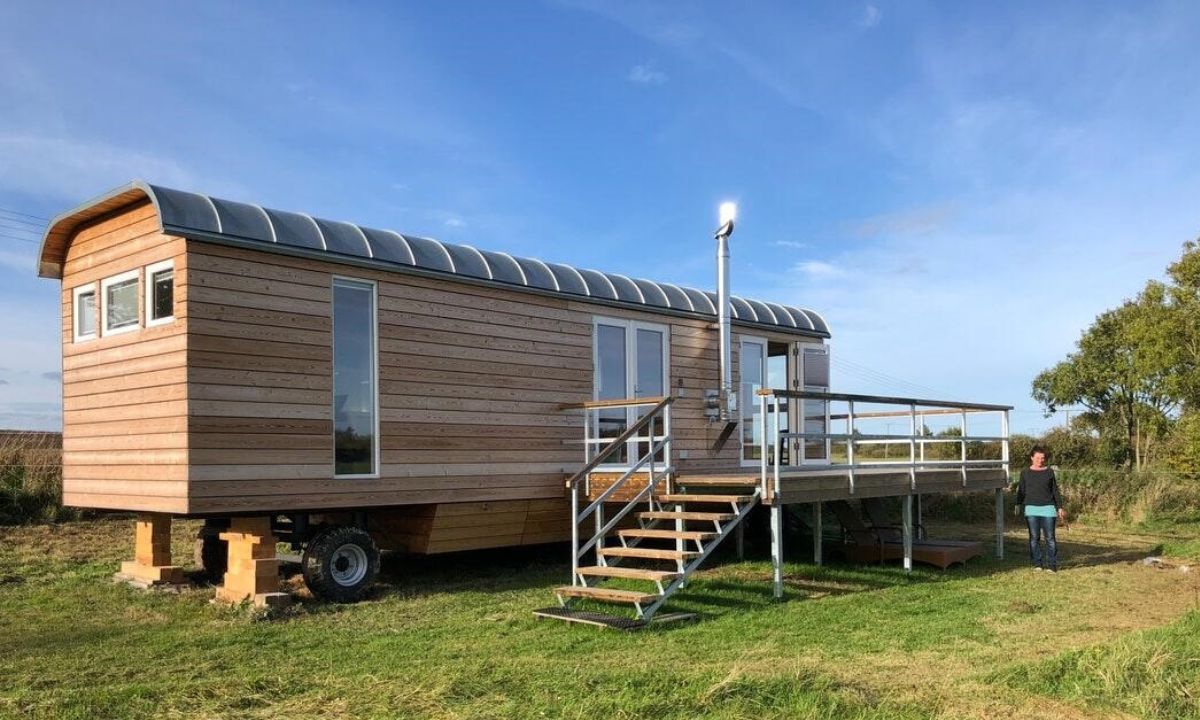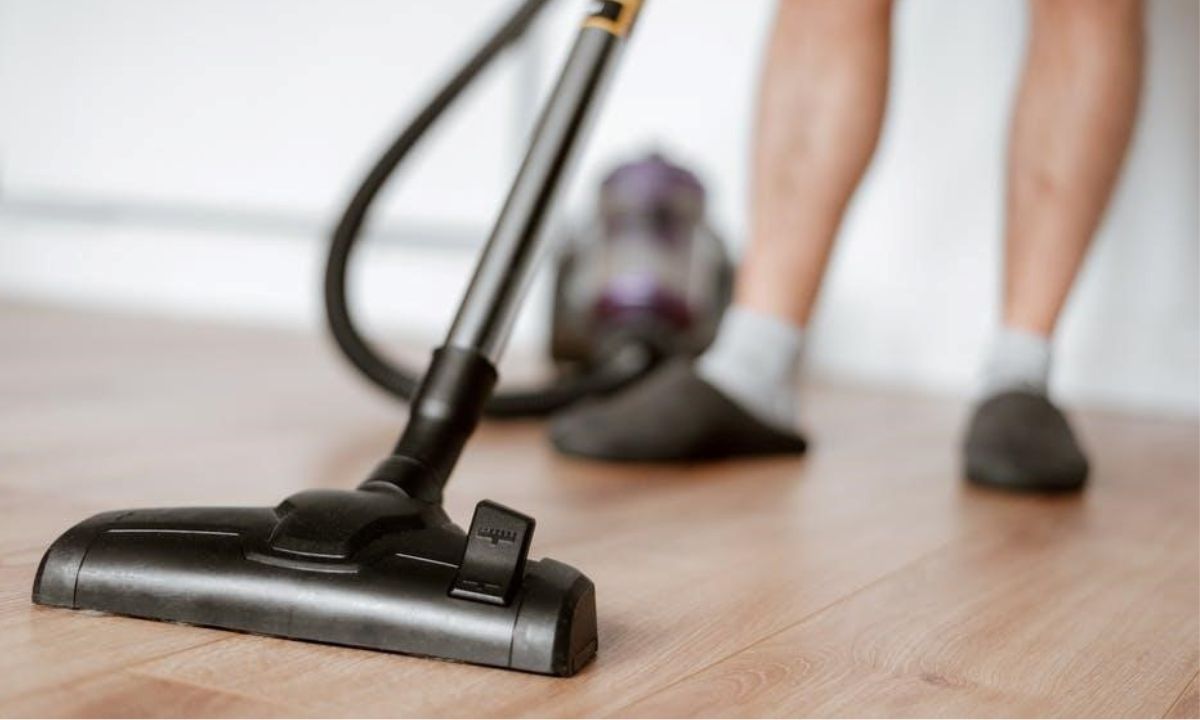Home Improvement
The Home Renovator’s Checklist: What You Need to Know Before Starting

Undertaking a home renovation is an exciting yet challenging task. It promises a refreshed living space that caters to your needs and tastes. However, preparing for a renovation involves more than just settling on a new paint color or choosing kitchen cabinets.
It requires careful planning, budgeting, and an understanding of the project’s scope. Hiring a home renovator can help make the process smoother and more efficient. Consider key aspects before starting to ensure a smooth and rewarding renovation journey. Read on!
Setting Goals and Priorities
Before diving into a home renovation, it’s crucial to identify what you hope to achieve. Are you looking to increase the resale value of your home? Or do you want to create a more functional living space for your family?
Clarifying your goals will help guide your decisions throughout the renovation. Once you have a clear vision, prioritize the tasks.
Determine which areas of your home require immediate attention and which can be addressed later. This approach helps manage the project’s scope and stay within budget.
Budgeting Wisely
One of the most critical aspects of home renovation is budgeting. It’s essential to establish a realistic budget that covers all the anticipated expenses. Start by getting estimates from contractors and comparing prices of materials.
Don’t forget to include costs for permits and any unexpected expenses that might arise. While it’s tempting to opt for the lowest quotes, ensure that the quality of work is not compromised. Good budgeting also means setting aside a contingency fund, typically 10-20% of the total budget, to cover unforeseen issues.
Research and Planning
Research plays a pivotal role in a successful renovation. Spend time gathering information about the latest trends, materials, and designs. Visit showrooms, browse through magazines, and consult with professionals like Wake Remodeling.
Planning involves drafting a detailed timeline of the project. Establish milestones and set deadlines for different phases of the renovation.
Creating a well-thought-out plan helps in maintaining the project’s flow and avoiding delays. Share the timeline with your contractor to ensure everyone is on the same page.
Hiring a Home Renovator
Choosing the right contractor or team of professionals can make or break your renovation project. Look for contractors with good reputations, proven track records, and necessary certifications. Ask for referrals from friends or family members and read online reviews.
It’s important to check their previous work and verify their credentials. Shortlist potential candidates. Get written estimates and interview them to gauge their understanding of your vision.
Establish clear communication channels with your contractor. This can avoid misunderstandings and ensure a smooth workflow.
Permits and Legalities
Depending on the scale of your renovation, you may require permits from local authorities. Neglecting to acquire required permits may result in legal entanglements and substantial fines. Check with your local municipality to determine which permits are needed for your project.
This may include the following:
- building permits
- electrical permits
- plumbing permits
Your contractor can assist in acquiring these permits. However, it’s your responsibility to ensure that all legal requirements are met. Complying with local regulations helps avoid potential issues in the future.
Materials and Quality
Selecting the right materials is critical for the durability and aesthetic appeal of your renovation. Quality should never be compromised, as it affects the longevity of your home improvements. Research different types of materials and compare their pros and cons.
Consider factors such as durability, maintenance, and cost. Opt for eco-friendly materials if you want to reduce your environmental footprint.
The choice of materials should align with your overall vision and budget. Your contractor can provide valuable insights into the best materials for your project.
Timeline and Flexibility
While it’s important to have a detailed timeline, be prepared for changes. Renovation projects often encounter unexpected delays due to various factors, such as:
- weather
- supply chain issues
- unforeseen structural problems
Flexibility is key to managing these challenges. Keep an open line of communication with your contractor and be proactive in addressing any issues that arise.
Regularly review the progress and adjust the timeline as necessary. Staying adaptable ensures that the project moves forward without unnecessary stress.
Living Arrangements
During a renovation, your home will turn into a construction site. Depending on the extent of the renovation, you may need to make alternate living arrangements. Consider the impact on your daily routine and plan accordingly.
If you decide to stay at home, designate specific areas as construction zones to minimize disruption. Ensure that these zones are safe and secure, especially if you have children or pets.
If the renovation is extensive, it might be more practical to temporarily move out. This allows the contractors to work more efficiently and reduces the inconvenience for you and your family.
Communication
Effective communication is the backbone of any successful renovation project. Establish regular meetings with your contractor. Discuss progress, address concerns, and make decisions.
Be clear about your expectations and provide feedback promptly. Maintaining an open dialogue helps in resolving issues quickly and keeps the project on track. Document all agreements and changes in writing to avoid disputes later on.
Good communication fosters a collaborative environment. This helps everyone work towards the common goal of completing the renovation to your satisfaction.
Final Inspection and Handover
As the renovation nears completion, conduct a thorough inspection of the work. Check that all the tasks have been completed to your satisfaction and that there are no outstanding issues. Pay attention to details like finishes, fittings, and overall craftsmanship.
If you notice any deficiencies, address them with your contractor and ensure they are rectified before the final handover. Once you are satisfied with the work, complete the formal handover process. This includes getting all necessary documentation, warranties and permits for the completed work.
Discover the Ultimate Home Renovation Checklist
Starting a home renovation is a significant undertaking. It requires careful planning, budgeting, and execution. By setting clear goals and hiring a reliable home renovator, you confidently navigate renovation challenges. Effective communication, flexibility, and attention to detail are key to a successful project.
Remember, a well-executed renovation not only enhances your living space but also adds value to your home. Embrace the process with patience and enthusiasm. Lastly, look forward to enjoying the fruits of your labor in your beautifully renovated home.
For more on this content, visit the rest of our blog!
Home Improvement
The Benefits of Choosing Mobile Dream Home Plans for Modern Living

In today’s fast-paced world, the concept of home has evolved significantly. Many people are seeking innovative ways to live that offer flexibility, sustainability, and affordability.
This is where mobile dream home plans come into play. These homes promise a lifestyle that adapts to your needs without compromising on comfort or style.
In this blog post, we’ll explore the various benefits of choosing mobile dream home plans for modern living. So, if you are curious about how this lifestyle choice can enhance your life, read on!
Let’s begin!
Affordability
Mobile dream home plans offer a cost-effective alternative to traditional housing. They allow you to save money in the long run. With a mobile dream home, there’s no need for expensive land purchases or construction costs.
Plus, they require fewer resources and maintenance expenses. This is because these affordable housing are typically smaller in size.
Furthermore, due to their mobility, you have the flexibility to move your home whenever needed. This can be made possible without the burden of additional relocation costs.
This makes it an ideal option for those who want a change of scenery. It’s also best for those who need to relocate frequently for work. Whether one wishes to purchase a mobile home in Lake County or anywhere else, it offers a more budget-friendly housing option.
Flexibility
Another significant advantage of mobile dream home plans is flexibility. These homes are designed to be easily transportable and customizable. This allows you to adapt your living space according to your needs.
It’s all possible with a mobile dream home. This is whether you want to:
- add an extra room
- expand the kitchen
- change the layout of your home
Moreover, these homes offer the option of off-grid living. They give you the freedom to live in remote locations without sacrificing modern conveniences. This flexibility allows for a more personalized and sustainable way of living.
Sustainability
Speaking of sustainability, mobile dream homes are an eco-friendly housing option. These homes minimize waste during construction as they often use recycled materials and have a smaller carbon footprint due to their size. Since they can also operate off-grid, they rely less on traditional energy sources and reduce your utility bills.
Furthermore, by choosing a mobile dream home, you are also contributing to reducing the demand for new land development and preserving natural resources. This makes it a responsible choice for those looking to live a more environmentally conscious lifestyle.
Those who are going for sustainable living can also incorporate eco-friendly practices such as rainwater harvesting, solar panels, and composting into their mobile dream home.
Consider Choosing Mobile Dream Home Plans for Modern Living
Mobile dream home plans offer a unique and modern way of living that caters to the needs and preferences of individuals in today’s society. These homes provide an attractive alternative to traditional housing options.
So, if you’re looking for a lifestyle that offers more freedom and versatility while also being environmentally friendly, consider choosing a mobile dream home for your next move. Experience the benefits for yourself and start living the dream!
Should you wish to explore more reads, head to our blog page. We’ve got more!
Home Improvement
Comparative Analysis: What Makes Different Types of Gutter Elbows Unique?

Are you aware of the crucial role gutter elbows play in your home’s drainage system?
Knowing the types of gutter elbows can improve your home’s rainwater management. These often-missed parts are crucial. They direct rainwater away, preventing damage.
Picture a drainage system that prevents rainwater leaks and erosion in your home. By selecting the right gutter elbows for your needs, you can significantly boost your system’s efficiency and lifespan.
Ready to optimize your home’s drainage system? Let’s dive into the various types of gutter elbows and discover how they can make a difference in your gutter installation.
The Importance of Gutter Elbows
Gutter elbows redirect water from horizontal to vertical downspouts. They help manage rainwater, preventing overflow and pooling around your home. Also, it’s vital to maintain them to avoid leaks and clogs.
Types of Gutter Elbows
The types of gutter elbows vary widely, with each designed for specific uses. Here’s a closer look at some popular options:
Standard Elbows
Standard elbows, made from aluminum or vinyl, are best for most homes. They come in various angles such as 45 or 90 degrees, allowing for flexible installations.
Downspout Elbows
These elbows connect the gutter system to the downspout. They direct water to ensure proper drainage. They often feature a long curve that reduces water turbulence.
Adjustable Elbows
These adaptable parts can be adjusted on-site to meet specific needs, easing installations in small areas. They are perfect for custom gutters and can often rotate completely.
Offset Elbows
Offset elbows help gutters move around things like windows or doors. This makes it easier for them to work properly and keep everything flowing smoothly.
Benefits of Different Elbow Types
Each elbow type improves your home’s drainage in unique ways. Standard elbows are affordable and simple to install. Downspout elbows prevent water backflow. Meanwhile, adjustable elbows are perfect for uneven roofs.
Choosing the right elbow reduces gutter upkeep. It prevents debris buildup and directs water efficiently. Well-managed gutters lower the risk of rain damage.
Impact on Gutter Installation
Choosing the right gutter elbow affects the whole gutter setup. Standard methods might fall short if specific needs aren’t met. So, knowing the types of elbows helps homeowners and contractors make better choices for their properties.
Also, picking high-quality elbows ensures they last longer and reduces repair needs. Investing in better options saves money in the long run by avoiding frequent replacements and repairs.
Choosing the Right Gutter Elbow for Your Home
When selecting a gutter elbow, consider factors such as the home’s roofline, rainfall patterns, and whether you require additional flexibility. Consulting a professional for installation or gutter repair in Knoxville, TN for instance is beneficial, especially for homeowners unfamiliar with the various types of gutter elbows and their applications.
Incorporating these elements into your gutter system can optimize performance and safeguard your property against water damage. With the right elbow in place, you can significantly improve rainwater management and extend the lifespan of your gutter system.
Conclusion: Enhance Your Gutter System Today
Understanding the features and benefits of the types of gutter elbows is crucial for improving your home’s drainage solution. The right components can improve your gutter installation and reduce maintenance.
A well-designed gutter system protects your home from water damage boosting its curb appeal. If you need help with your home’s drainage, contact experts today.
Looking for more insights? Explore our blog for articles on a range of topics!
Home Improvement
Top 7 Key Components of a Successful Cleaning Business Plan

A solid cleaning business plan is a must for any cleaning company, whether you’re just starting or aiming to grow your existing business. Think of it as your roadmap-guiding your steps and helping you reach your goals. A great plan can even attract investors, secure funding, and help you partner with other businesses.
In this article, we’ll dive into the top 7 key components of a winning cleaning business plan that will set you up for success in the competitive cleaning world! Let’s get started!
Executive Summary
The executive summary is usually the first part of a business plan, but it’s best to write it last. This section gives an overview of your entire cleaning business plan.
It highlights the main points and helps readers understand what they will find in the rest of the document. An effective executive summary should be clear and interesting, making readers want to keep going.
It’s important to include key details and a strong reason for them to read on. Thus, ensuring they grasp the essence of your plan right from the start.
Market Analysis
A detailed market analysis is key to knowing your target audience, competitors, and industry trends. It includes looking into the demand for different types of cleaning services in your area, finding potential customers and their needs, and studying your competitors’ strengths and weaknesses. This info will help you figure out your unique selling points and create effective marketing strategies.
Services and Pricing
It is important to clearly define the services you provide and their costs in a cleaning business plan. Your services should meet market demand, the needs of your target audience, and what your company can do. Think about pricing strategies like competitive pricing or value-based pricing to make sure you stay profitable while being competitive.
Marketing Strategy
A marketing strategy shows how you will reach and attract customers. It should include details about your target audience, messaging, advertising channels, and budget. Your marketing strategy must match your business goals and make your brand stand out from competitors.
Operations Plan
The operations plan shows how your house cleaning business runs every day. It should include details about staff, equipment, supplies, daily tasks, and quality checks. A clear operations plan helps your business run smoothly and keeps service consistent.
Financial Projections
Financial projections are key to showing how profitable and sustainable your cleaning business can be. They should cover startup costs, expected income, balance sheets, and cash flow statements. These projections help you check if your business plan is financially sound and highlight any necessary changes.
Continuous Improvement Plans
To assess and improve your cleaning business services regularly, set clear goals for customer satisfaction and employee performance. This can help you stay competitive. Look into ideas from industry experts like Debbie Sardone Consulting to boost your strategies and make sure your growth is sustainable.
Build a Successful Cleaning Business Plan with this Guide
A good cleaning business plan is important for success in the competitive cleaning industry. It helps you make smart choices, attract investors, and grow your business. Don’t forget to check and update your plan as your business changes. Start on your cleaning business plan today and watch your business grow! Happy cleaning!
Is this article helpful? Keep reading our blog for more.
-

 Business5 months ago
Business5 months agoExploring the Rental Market: Properties for Rent in Malta
-

 How-To Guides5 months ago
How-To Guides5 months agoComprehensive Guide to Cockwarming: Enhancing Intimacy and Connection
-

 Home Improvement6 months ago
Home Improvement6 months agoEco-Friendly Round Rug Options for Sustainable Living in NZ
-

 Apps and Games6 months ago
Apps and Games6 months agoDiscover Tickzoo: The Ultimate Platform for Video Content Lovers and Creators
-

 Fashion6 months ago
Fashion6 months agoBlack Magic: The Elegance and Sophistication of Ultimate Homecoming Dresses in Black
-

 Tech7 months ago
Tech7 months agoExploring the Features of Innocams: The Future of Security
-

 Business7 months ago
Business7 months agoUnlock Potential: Explore Pikruos Services
-

 Health6 months ago
Health6 months agoSports First Aid Kits: Must-Have Items for Athletes and Their Coaches
